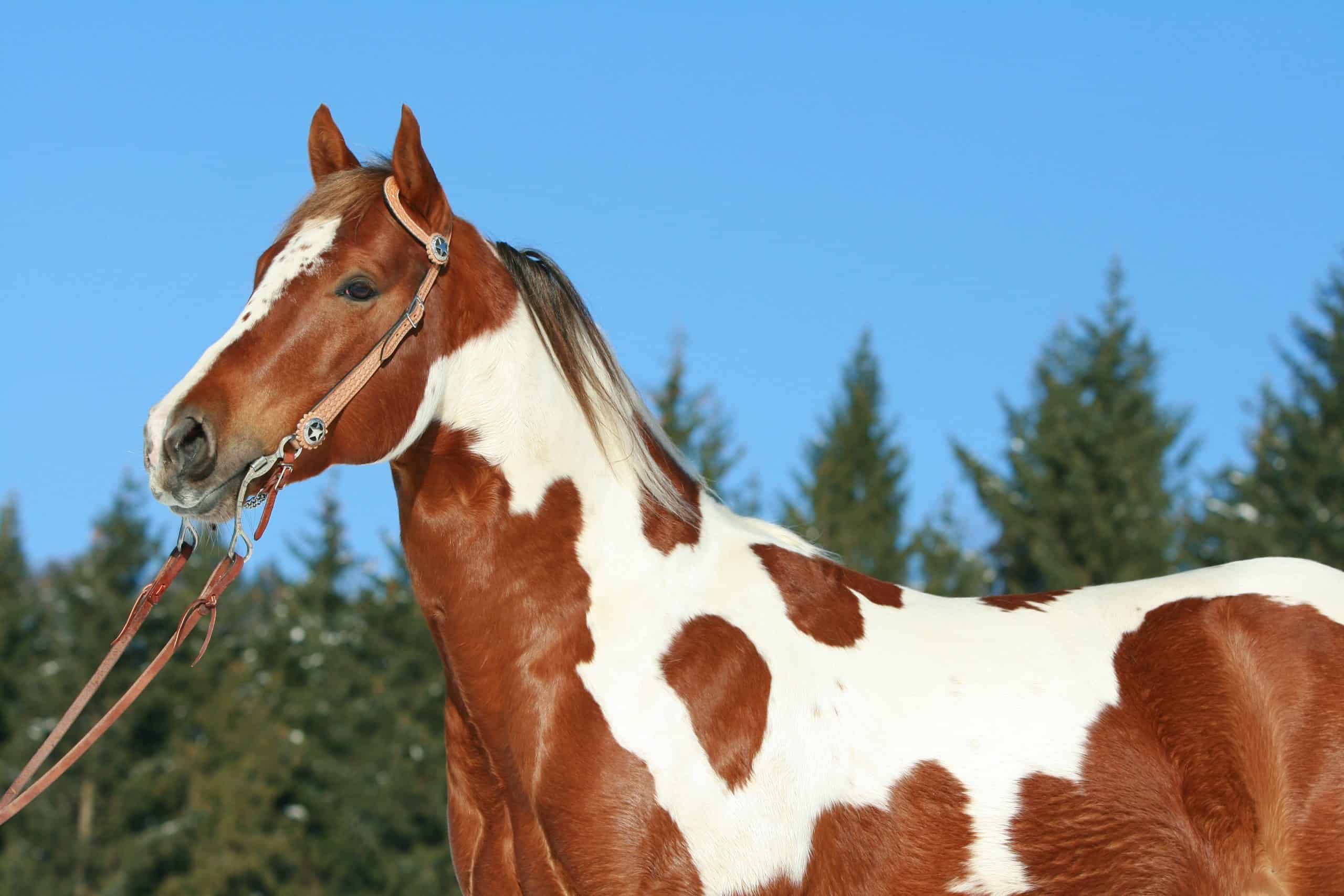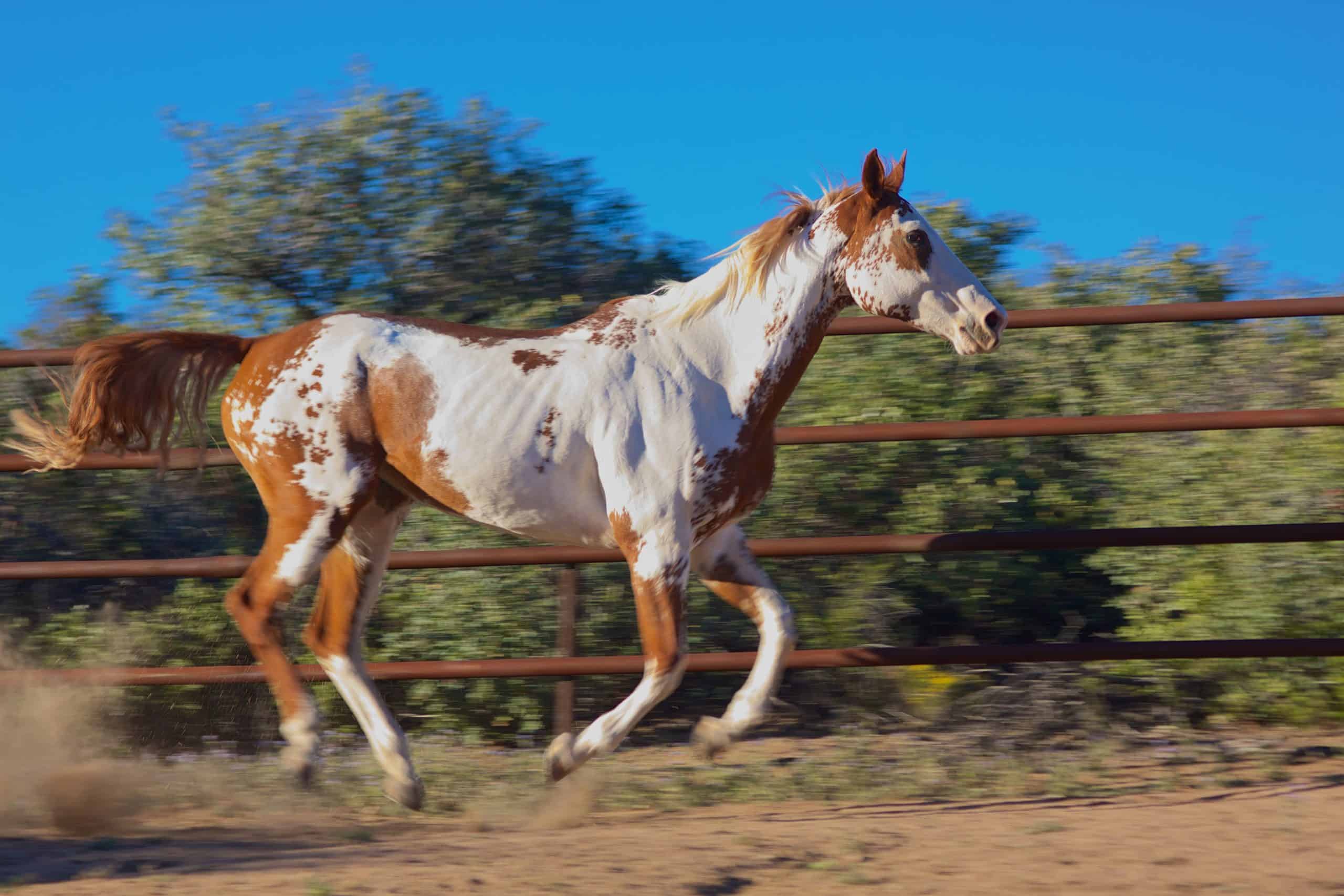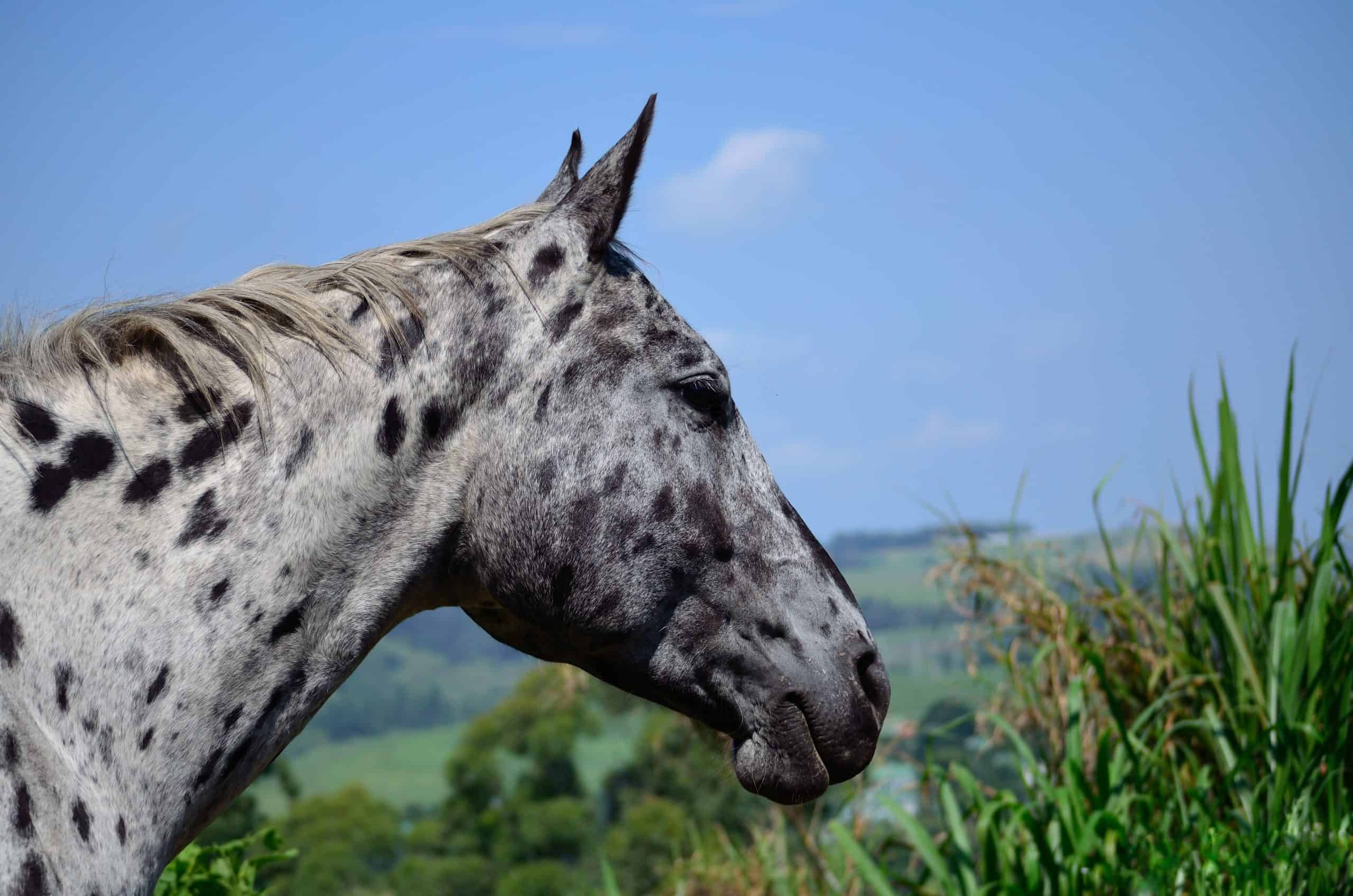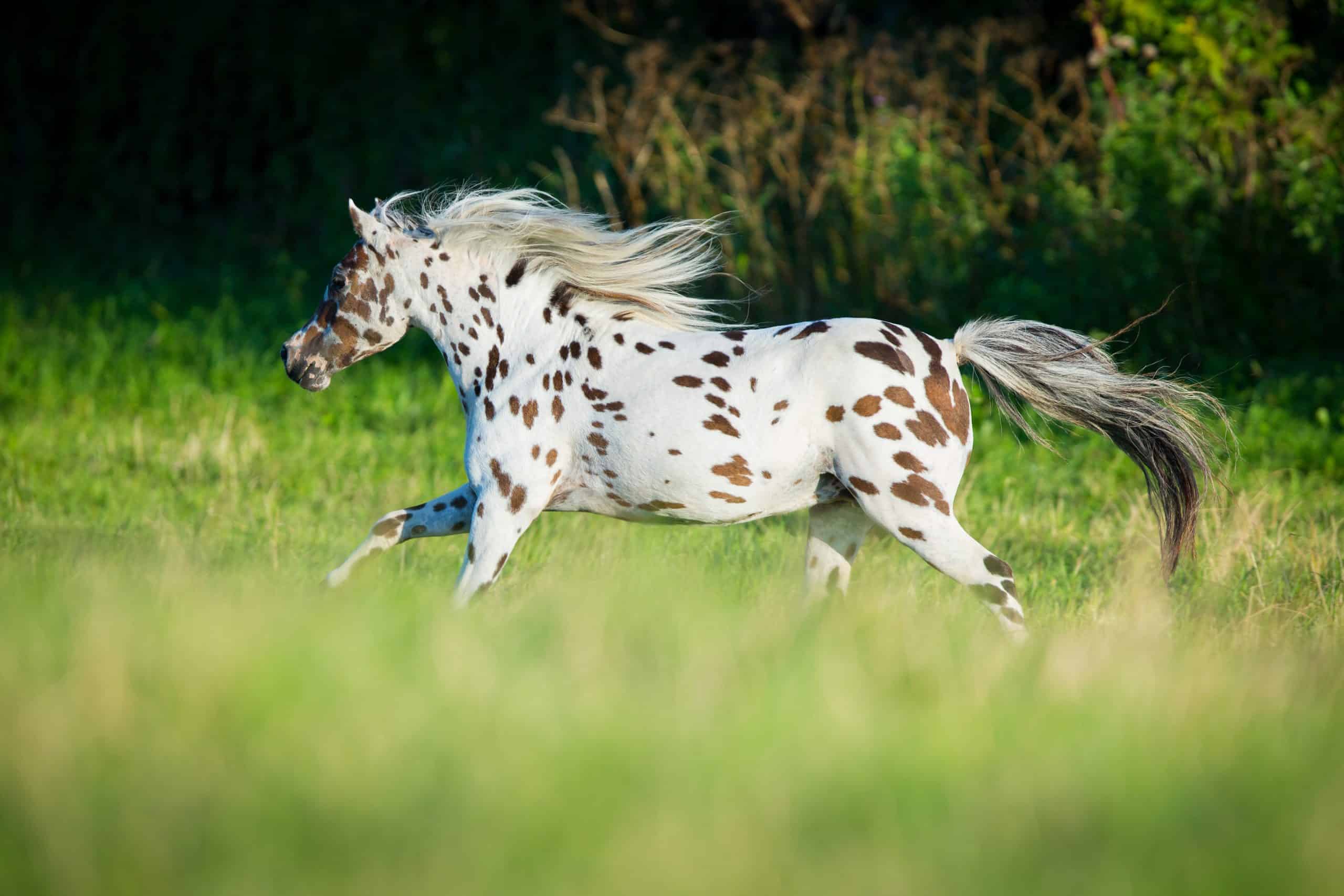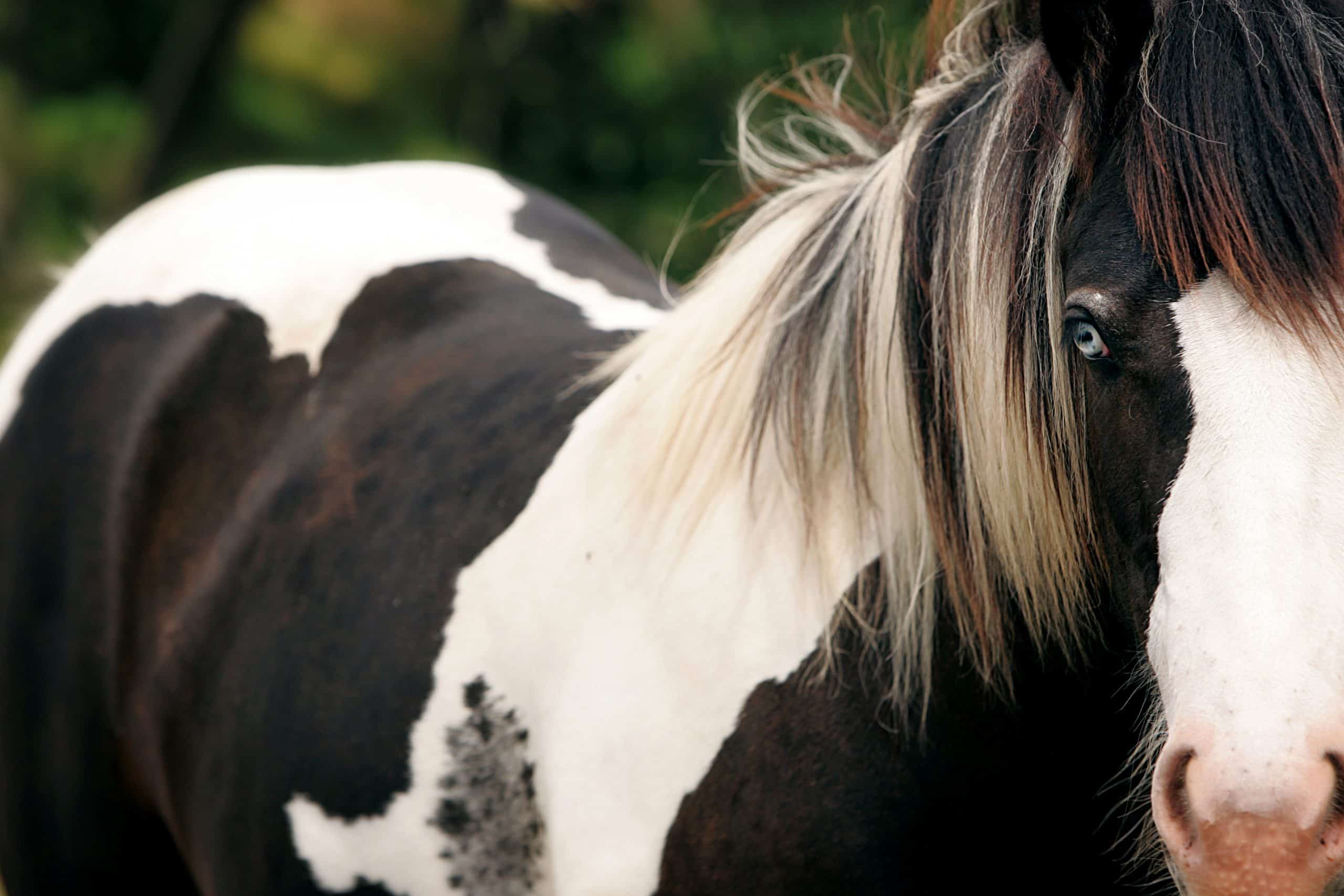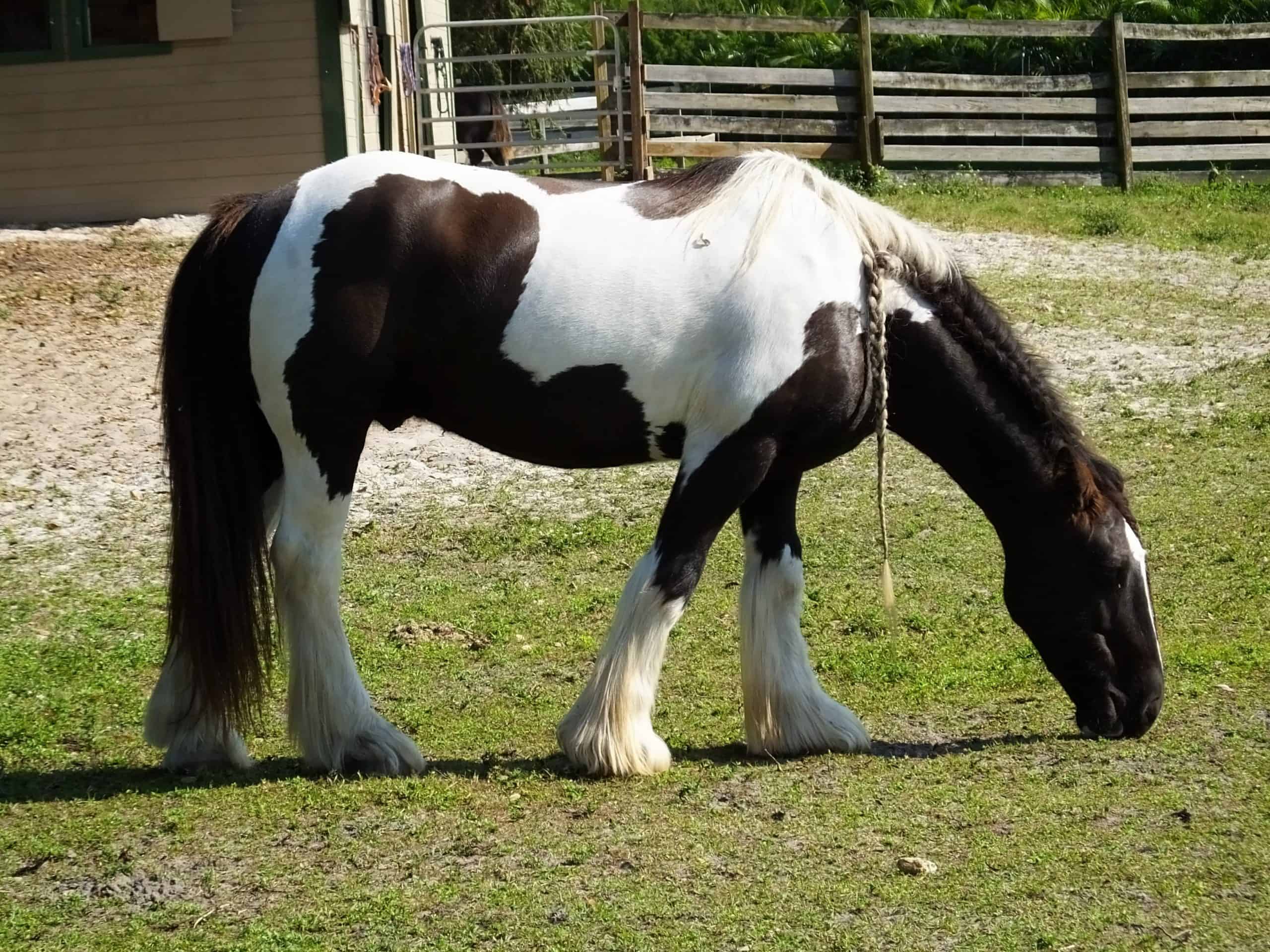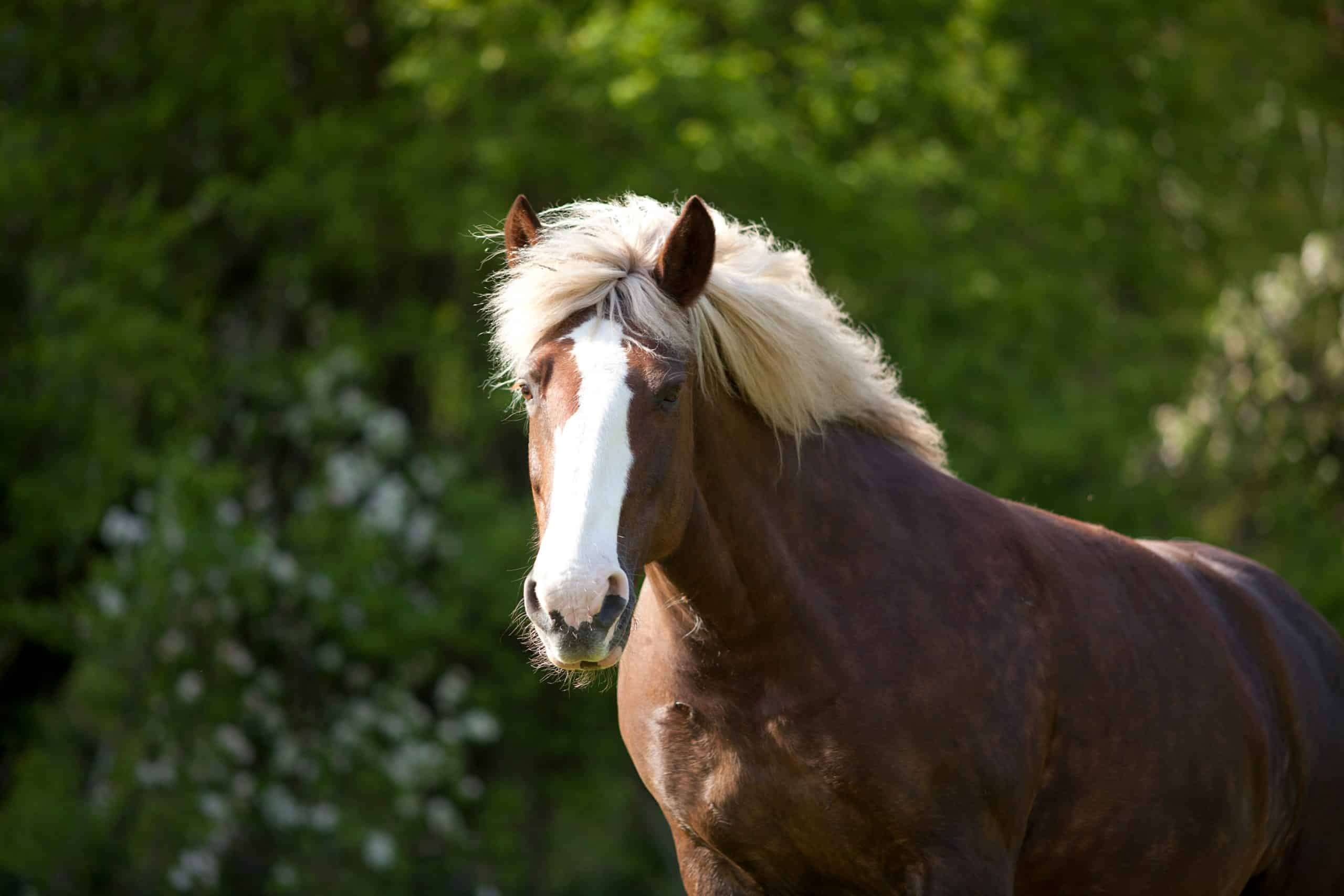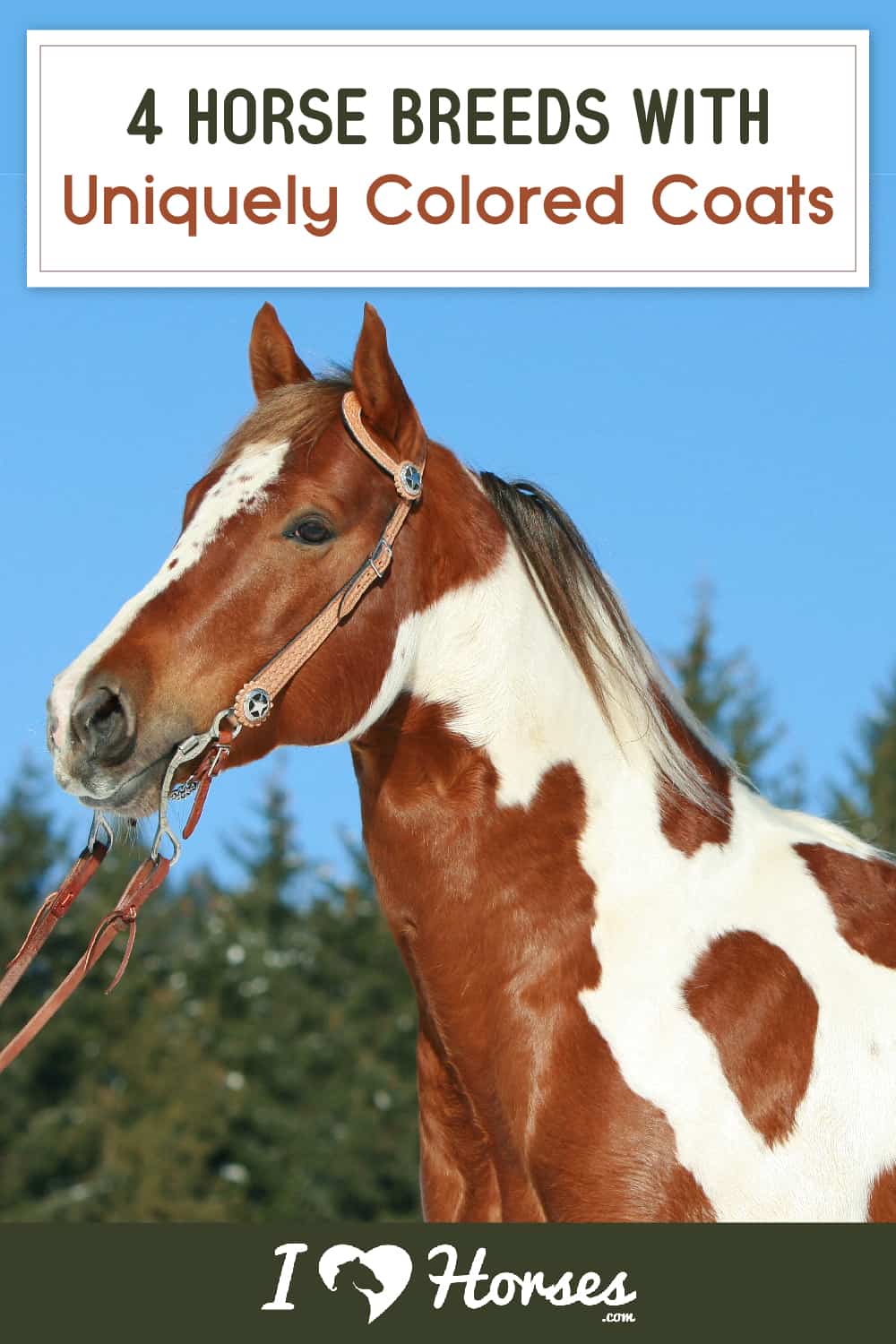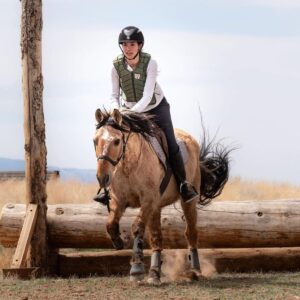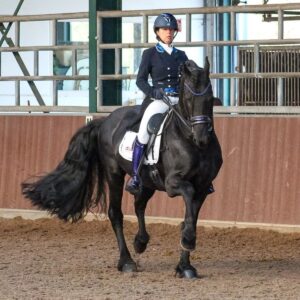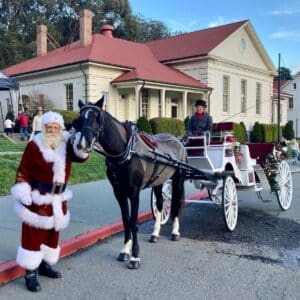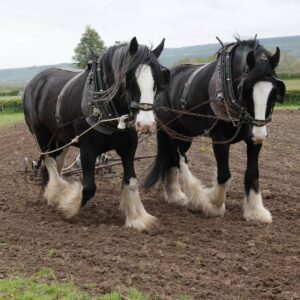Horses come in all sorts of shapes and sizes, as well as a whole rainbow of colors. And while, for many centuries, solid-colored horses have outnumbered spotted, pinto, and a variety of other coat patterns, so-called "colored" horses are becoming more and more popular these days. In fact, breeds such as the Appaloosa and American Paint Horse are amongst the most popular in the world.
Paint Horse
Height: 14.2hh (57 inches) to 15.2hh (61 inches)
Color: White with any other color
Country of Origin: USA
Character: They’re gentle horses with kind natures. Known for their intelligence, they’re eager to please.
Interesting fact: The Paint Horse’s coat patterns are known as tobiano (white back and legs, colored head, and mane and tail with both colors), overo (white belly and head, typically with at least one blue eye), and tovero (a mixture of both tobaino and overo).
 When you talk about colored horse breeds, most people will automatically think of the Paint Horse—and with good reason.
When you talk about colored horse breeds, most people will automatically think of the Paint Horse—and with good reason.
Even the Native American Indians, who originally bred them, thought that their eye-catching coat patterns gave them special powers during battle.
Like so many American breeds, Paint Horses descended from the horses that the Spanish Conquistadors brought with them. Whether during battle or raids, many of these horses escaped and started to form wild herds across the west. Over time, some of these horses were domesticated and bred with Quarter Horses and Thoroughbred. This created the versatile breed we have today. In fact, many Paint Horses are actually dual registered with the American Quarter Horse Association.
Appaloosa
Height: Typically between 14hh (56 inches) and 16hh (64 inches)
Color: Any color base coat overlaid with spots in a variety of patterns
Country of Origin: USA
Character: Appaloosas are extremely friendly horses that love being around people. They have an abundance of energy and versatility.
Interesting fact: All Appaloosas, regardless of whether or not they have spots, have mottled skin around their eyes, noses, and genitals.
The Appaloosa has to be one of the most easily recognizable breeds in the world.
Yes there are other spotted breeds, but pretty much all of them have Appaloosa in their DNA. While the Appaloosa is without question a distinctive breed, it's the horse's energy, versatility, and friendly nature that have guaranteed the future of the breed.
Many people argue that the Appaloosa is descended from Spanish horses. But while there is a certain amount of Spanish blood, the breed itself is much more closely related to the Russian Don. With the Bering Strait being only around 2 miles wide in places, it was an easy trading route for the Russians. And of course, horses were a valuable commodity at the time.
Gypsy Horse
Height: Most horses will stand at around 14.2hh (57 inches) but they can be anything between 12.2hh (49 inches) and 16hh (64 inches).
Color: Piebald (a black coat with white patches; more often than, not their lower legs will also be white) is by far the most common color. But skewbald (a base coat of any color except black—or white—and patches of white) or any solid color with a white belly (known as blagdon or splash) can also be found.
Country of Origin: United Kingdom & Ireland
Character: The Gypsy Horse is a gentle horse that is eager to please. Gypsy Horses were prized for their loyalty as well as their courage. They make great family horses and can easily be handled by children of all ages.
Interesting fact: Having been bred to pull heavy caravans, or vardos, Gypsy Horses will never stop when they're traveling up a slope. From a very young age, they've been bred to do this. If they stop on a slope, it can be difficult for them to start again while pulling the vardos.
Despite having been bred for a particular purpose as far back as the mid-1800s, the Gypsy Horse wasn't officially recognized as a breed until 1996 when the Traditional Gypsy Cob Association was established.
The Gypsy Horse was exported to America and the rest of the world at the same time and has become a very popular breed across the globe.
Going by a number of different names, such as the Gypsy Vanner, Gypsy Cob, and Tinker Horse, the Gypsy Horse was originally bred by British and Irish travelers to pull the caravans. These caravans, known as vardos, were the original mobile homes. So, the horses pulling them needed to be strong (in order to pull the travelers' worldly possessions), but also have gentle nature so that children would be safe running around them.
While any color can be registered, the pinto coloring is by far the most common. But because the breed originates from Britain and Ireland, the British color names (such as piebald and skewbald) are always used in the registry.
Black Forest Horse
Height: Mares are normally between 14.2hh (57 inches) and 15.2hh (61 inches), while stallions are taller and can stand up to 16hh (64 inches).
Color: Chestnut body with a flaxen mane and tail
Country of Origin: Germany
Character: The Black Forest Horse is strong and reliable. These horses are friendly, easy to keep, and willing to please.
Interesting fact: In Germany, the color is referred to as dunkelfuchs, which means "dark fox."
Okay, so I admit the Black Forest Horse technically isn’t a colored breed.
But its stunning coat, which can range from pale chestnut to an almost-black chestnut, combined with a silver flaxen colored mane and tail, make it a stunning horse nevertheless.
Horse Courses by Elaine Heney
- Listening to the Horse - The Documentary by Elaine Heney & Grey Pony Films
- Shoulder In & Out Training for better balance, bend & topline development with your horse
- Over 110+ Polework Exercises & Challenges to Download
- Dancing at Liberty & Creating Connection with Your Horse (11 lessons) - Grey Pony Films
Records from the 15th century show that it was originally bred in the Black Forest region of Germany. Like so many draft horses at the time, it was bred at local monasteries for forestry and agricultural work. One of those monasteries was the St. Märgen, which is why it was once called St. Märgener Fuchs—a play on the color that translates to St. Märgener’s Fox.
Today, due to the mechanization of many farming practices, the Black Forest Horse is classed as endangered. But there is light at the end of the tunnel, because its popularity as a riding horse is growing rapidly.
Which other horse breeds do you think have unique coat colors? Let us know in the comments below!
Article written by Lucy at horsefactbook.com

